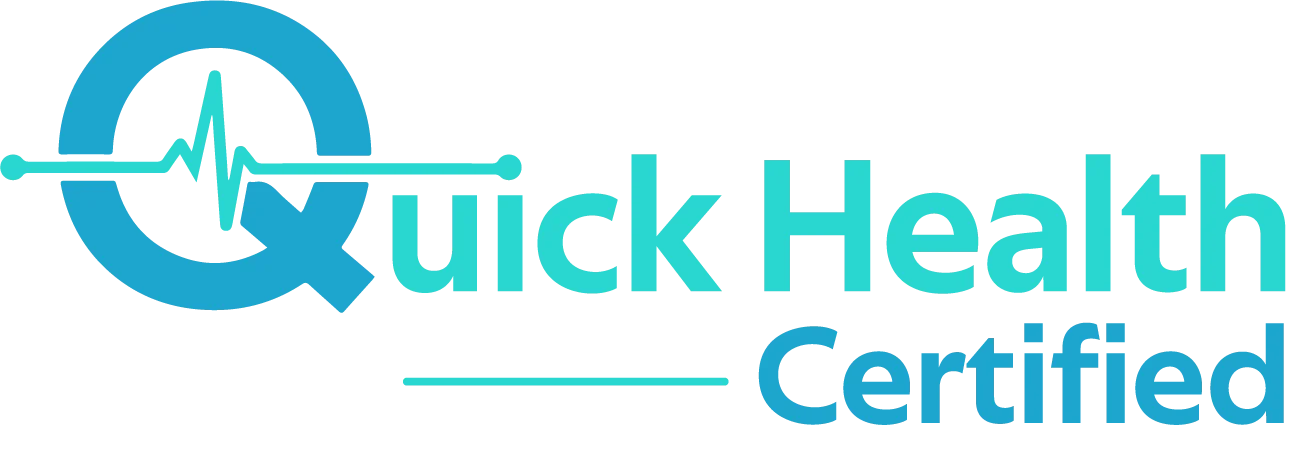Mon-Fri 9am to 6pm CST
by John Doe
31-July-2024

Medical Billing and Coding: Exploring the Basics
Think about a time when you were at the doctor’s office for a routine check-up.
You sit down, chat with the physician, get checked over, and maybe even have a blood test.
Then you leave with a prescription in hand. Super simple, right?
Yeah, only on the outside.
Here's the thing—behind the scenes, there’s a whole lot more happening.
Your visit is being processed into a series of codes, and those codes will determine how your doctor gets paid for their services, how your insurance handles the claim, and even how they manage future treatments.
And this is where the aspect of medical billing and coding come in.
You see, medical coding is not just a bunch of random numbers and letters. It’s a well-organized system designed to help healthcare providers, insurance companies, and patients navigate the often-confusing world of healthcare reimbursement. If you’ve ever wondered about those codes or considered entering the field yourself, you’re in the right place.
In this post, we’ll break down the basics of medical billing and coding, explain how it works, and answer some of your burning questions—like what exactly does the job entail? , "understanding the different types of coding” and “how to become a medical coder?"
So, without much ado, let’s dive into the nuts and bolts of this crucial aspect of the healthcare industry.
What is Medical Billing and Coding?
While medical billing and coding may sound complicated at first, but at its core, it’s about documenting and billing the right medical services according to the relevant diagnosis.
Think of it like translating a medical visit into a language that insurance companies and healthcare providers can understand.
Here’s how it works:
- Medical Coding:It’s the process where details of a patient's visit, such as the symptoms, diagnosis, and any treatments or procedures are documented by medical coders, which is then turned into specific codes. These codes are quite necessary because they determine how the services are billed and how much the insurance will pay. For example, if you visit a doctor with a cough, the ICD-10 code for cough (R05) will be used to document the diagnosis.
- Medical Billing: This process comes after the coding - after the coders assign the right codes – then the medical billers take over. They use these codes to submit claims to the insurance company for reimbursement (if any). If there’s a problem with the claim, billers are the ones who follow up to ensure everything and everyone gets paid accordingly – whether it’s outpatient department or coding in medicine. Without proper billing, doctors and healthcare providers wouldn’t get paid for their work; because no one would know how much one is due.

Understanding ICD and CPT
While there are numerous sets of codes a medical coder needs to be familiar with, but for the sake of this post we’ll only put our attention to these two:
-
ICD
– International Classification of Diseases ICD 10 code for cough
ICD 10 code for dehydration
ICD 10 code for diarrhea
ICD 10 code for hypokalemia
ICD 10 code for left knee pain
While ICD is subdivided into around 69,000 codes, but some of the common ones are:
This code is used to categorize a cough that may be due to various causes, including viral infections, allergies, or other respiratory problems.
It's for when a patient gets diagnosed with lack of water in the body which can be caused from various factors like illness, lack of water intake, or heatstroke.
As the name suggests, this one’s for when someone describes their condition of having frequent, loose, and watery stools.
This code is used for when a person’s body shows signs of low potassium. At such a time, the patient should take potassium supplements and start eating foods high in potassium.
This one is used for when a patient complains about having knee pain. While knee pains can be because of many reasons, some potential ones include aging, injury, or vitamin D deficiency.
CPT
– Current Procedural Terminology99214 CPT code
99213 CPT code
99204 CPT code
G2211 CPT code
99203 CPT code
96372 CPT code
-
ICD Definition
CPT Definition
These codes are like the building blocks of medical billing, ensuring that the right services and diagnoses are accurately represented.
As of the revised list, there are more than 10,000 CPT codes at this time, but just for the sake of this article, here are some of the most common ones:
99214 CPT code is a billing code used when the doctor's decision-making is of mild complexity. This means they had to think more carefully and maybe consider several diagnoses about your care or treatment.
This code is used when the doctor's decision-making is of low complexity. For instance, if the doctor quickly figures out what’s the problem and gives you a straightforward decision about your care, they might use code 99213.
CPT code 99204 basically means you had a pretty in-depth first visit with a new doctor.
This code’s used when a doctor needs to spend extra time and effort taking care of a patient with a serious or complicated health problem.
The 99203 CPT code is used as a billing code for a pretty basic first visit with a new doctor.
CPT code 96372 simply means you were administered an injection or infusion. This could be for treatment, prevention of disease, or for diagnostic purposes.
These codes are used to represent diseases, conditions, and symptoms. They help categorize everything from the common cold to chronic conditions like hypokalemia (low potassium). So, if you visit your doctor with dehydration, the ICD-10 code for dehydration (E86.0) will be applied. Each code tells the healthcare provider and the insurance company exactly what’s going on.
While ICD codes document diagnoses, CPT denotes procedures and services provided during the visit. For example, if you visit a doctor for a check-up, the 99213 CPT code might be used. This is for a level 3 office visit with an established patient. There are other codes too, such as 99214 CPT code or 99203 CPT code for a new patient visit.
So, in a nutshell, ICD codes represent a patient's illness or injury, whereas CPT codes describe the care or service provided by the doctor or medical practitioner.
With the definitions and types of coding out of the way, now let’s get into the practical part:
How to Become a Medical Biller and Coder
When it comes to becoming a medical coder and biller, the good news is you don’t need years of medical school to enter this field, but rather the right training and certification.
And if you’re a complete beginner looking to enter the medical coding field without experience?", the answer lies in specialized training programs. For instance, many people enter the field by enrolling in a medical billing and coding
bootcamp or certification courses, where they learn the ins and outs of ICD, CPT, their related codes, as well as the entire billing process.
And what’s more, the cost of becoming a medical coder isn’t that much too.
Sure, the costs can vary, depending on your state, type of certification, and institute/platform you opt for but many come in the bracket of $2,000 to $5,000, with availability of partial payments too.
However, the investment is well worth it, as their pay scale is also quite high going upto $48,780 per year, and the potential for career growth is considerably huge.

The Importance of Medical Billing and Coding
Medical billing and coding may not be something we think about often, but the thing is—you can’t afford to overlook it. It’s absolutely crucial to how the entire healthcare system works
Picture this: What if doctors, nurses, and everyone in the healthcare system didn’t get paid for the work they do? Sounds odd, right?
That’s exactly what would happen if we didn’t have medical billing and coding in place.
You see, medical coders use specific codes to track exactly what treatments and services patients receive. And without these codes, insurance claims get stuck in a never-ending loop of confusion and delays.
But the real beauty of medical billing and coding is that it’s about much more than just getting paid. It’s about keeping patient records organized, standardized, and easy to access.
Those codes help track diagnoses, manage treatments, and monitor patient health, and without it, everything becomes a mess. Doctors can’t make informed decisions. Healthcare providers can’t deliver because they don’t know what to do exactly. And insurance companies don’t know what they’re paying for.
So next time you think about medical billing and coding, just remember: It’s not just about the paperwork—it’s the heartbeat of the entire healthcare system.
Conclusion
Medical billing and coding is a field that plays a critical role in healthcare—and it's one you can step into with the right training. It’s not glamorous, but it’s in-demand, flexible, and can set you up for long-term success.
If you're ready to dive in, there's no better time than now. With the right skills, you can help ensure healthcare systems run smoothly, and start earning in a career that’s growing every day.
At Quick Health Certified, we provide the training you need to get started quickly and confidently. Our online, self-paced programs are designed to get you job-ready, no matter your background.
Your career in medical billing and coding is waiting—take the first step with us today.
FAQs
Let's Meet
Please provide us your email address and we'll connect you with a member of our admission team.
Recent Posts
Allied Health in the Rearview Mirror:
What have we Learned over past 10 Years?
30-Jan-2024
Allied Health in the Rearview Mirror:
What have we Learned over past 10 Years?
30-Jan-2024
Allied Health in the Rearview Mirror:
What have we Learned over past 10 Years?
30-Jan-2024
Allied Health in the Rearview Mirror:
What have we Learned over past 10 Years?
30-Jan-2024
Allied Health in the Rearview Mirror:
What have we Learned over past 10 Years?
30-Jan-2024



 Chat
Chat